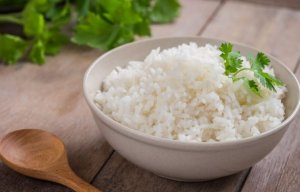Exchange Diet

There are many ways to create a personalized diet. However, if you’re looking for a way that can provide you with enough energy and macronutrients during the day, an exchange diet is a great choice. In the next article, we’ll explain a few highlights about this diet planning method.
What is an exchange?
Before you know what this type of diet planning consists of, we’ll define the term ‘exchange’ as a group of foods with the same energy and macronutrient value. Foods that are in the same group are interchangeable, without representing a significant variation in those values.

What it consists of
This type of diet consists of distributing your daily energy, carbohydrates, proteins and fat needs throughout the day, as exchanges.
Once you know the meaning of the word, it’s important that you know how relevant it actually is when planning your diet.
Based on different factors, your body needs a certain number of calories. This number varies depending on your goal (maintenance, fat loss, muscle gain), but you’ll definitely reach it through the nutrients contained in what you eat.

Food is composed by macronutrients, micro nutrients and water. The first ones are carbohydrates, proteins and fats; each one of these provides a different number of calories per gram.
In just three steps you can start to use exchange lists:
1. Learn about your energetic and nutritious needs.
2. Calculate the number of exchanges in each daily food group.
3. Distribute the different exchanges in each meal.
How do you plan an exchange diet?
Besides knowing your daily dietary needs and food tastes, you must change your habits by excluding unhealthy foods from your diet and by including foods that are beneficial for your health.

The exchange unit will help to account for how much food, what kinds of food and to determine from which group of foods you should eat. It’ll also help to control the portions of macronutrients.
Food groups are commonly known as: dairy, vegetables, fruits, cereals, tubers, legumes. There are also other foods called: protein foods and fatty foods.
We also want to emphasize that within one food group, such as protein foods, there are different subgroups, such as protean I, protean II, etc.
These subgroups match in energy amount, proteins and carbs; however, they contain more fat per exchange.
Assignment and distribution
Once you’ve calculated the number and types of exchanges, in order to create the most personalized diet that you can make, you must adjust the meals and make sure that the total daily deviations are within allowed limits.
Writing down the diet
Finally, after completing the previous process, you must write the diet down, in a way that all of the options that you can exchange during the day, are clear. You should also make sure that it provides the right amounts of energy and macronutrients.

You should organize the diet list in meals and separate the food groups using dashes in each of them, meaning you include as many dashes, as groups of food that you eat in one meal.
In each dash you should specify the food and the amount (in household measurements, size and grams). Every food should be separated from the next one with the word ‘or’, or the word ‘and’, depending if you have to choose an option from that group, or if you have to complement them. So on and so forth, until you complete all of the dashes in each meal throughout the day.
In conclusion
It’s important to know that this method should be accompanied by an explanation from the dietitian. This is so you can understand the method in a better way and it becomes more useful.
An exchange diet is a useful tool to learn how to control the quality and quantity of the foods that you should include in your regular diet. This will help you to learn how to eat in the right and healthy way.
There are many ways to create a personalized diet. However, if you’re looking for a way that can provide you with enough energy and macronutrients during the day, an exchange diet is a great choice. In the next article, we’ll explain a few highlights about this diet planning method.
What is an exchange?
Before you know what this type of diet planning consists of, we’ll define the term ‘exchange’ as a group of foods with the same energy and macronutrient value. Foods that are in the same group are interchangeable, without representing a significant variation in those values.

What it consists of
This type of diet consists of distributing your daily energy, carbohydrates, proteins and fat needs throughout the day, as exchanges.
Once you know the meaning of the word, it’s important that you know how relevant it actually is when planning your diet.
Based on different factors, your body needs a certain number of calories. This number varies depending on your goal (maintenance, fat loss, muscle gain), but you’ll definitely reach it through the nutrients contained in what you eat.

Food is composed by macronutrients, micro nutrients and water. The first ones are carbohydrates, proteins and fats; each one of these provides a different number of calories per gram.
In just three steps you can start to use exchange lists:
1. Learn about your energetic and nutritious needs.
2. Calculate the number of exchanges in each daily food group.
3. Distribute the different exchanges in each meal.
How do you plan an exchange diet?
Besides knowing your daily dietary needs and food tastes, you must change your habits by excluding unhealthy foods from your diet and by including foods that are beneficial for your health.

The exchange unit will help to account for how much food, what kinds of food and to determine from which group of foods you should eat. It’ll also help to control the portions of macronutrients.
Food groups are commonly known as: dairy, vegetables, fruits, cereals, tubers, legumes. There are also other foods called: protein foods and fatty foods.
We also want to emphasize that within one food group, such as protein foods, there are different subgroups, such as protean I, protean II, etc.
These subgroups match in energy amount, proteins and carbs; however, they contain more fat per exchange.
Assignment and distribution
Once you’ve calculated the number and types of exchanges, in order to create the most personalized diet that you can make, you must adjust the meals and make sure that the total daily deviations are within allowed limits.
Writing down the diet
Finally, after completing the previous process, you must write the diet down, in a way that all of the options that you can exchange during the day, are clear. You should also make sure that it provides the right amounts of energy and macronutrients.

You should organize the diet list in meals and separate the food groups using dashes in each of them, meaning you include as many dashes, as groups of food that you eat in one meal.
In each dash you should specify the food and the amount (in household measurements, size and grams). Every food should be separated from the next one with the word ‘or’, or the word ‘and’, depending if you have to choose an option from that group, or if you have to complement them. So on and so forth, until you complete all of the dashes in each meal throughout the day.
In conclusion
It’s important to know that this method should be accompanied by an explanation from the dietitian. This is so you can understand the method in a better way and it becomes more useful.
An exchange diet is a useful tool to learn how to control the quality and quantity of the foods that you should include in your regular diet. This will help you to learn how to eat in the right and healthy way.
All cited sources were thoroughly reviewed by our team to ensure their quality, reliability, currency, and validity. The bibliography of this article was considered reliable and of academic or scientific accuracy.
- DEXTRE JAÚREGUI, M. L., Rusolillo, G., MARQUES-LOPES, I., ROJAS LIMACHE, G., SALVATIERRA RUIZ, R., GALLO RUELAS, M., & APARCO BALBOA, J. P. (2022). Diseño y validación de una lista de intercambio de alimentos peruanos para la confección de dietas y planificación de menús. Nutrición Clínica Y Dietética Hospitalaria, 42(2). https://doi.org/10.12873/422dextre
- Goni Mateos, Leticia, Aray Miranda, Maritza, Martínez H., Alfredo, & Cuervo Zapatel, Marta. (2016). Validación de un cuestionario de frecuencia de consumo de grupos de alimentos basado en un sistema de intercambios. Nutrición Hospitalaria, 33(6), 1391-1399. https://dx.doi.org/10.20960/nh.800
This text is provided for informational purposes only and does not replace consultation with a professional. If in doubt, consult your specialist.








